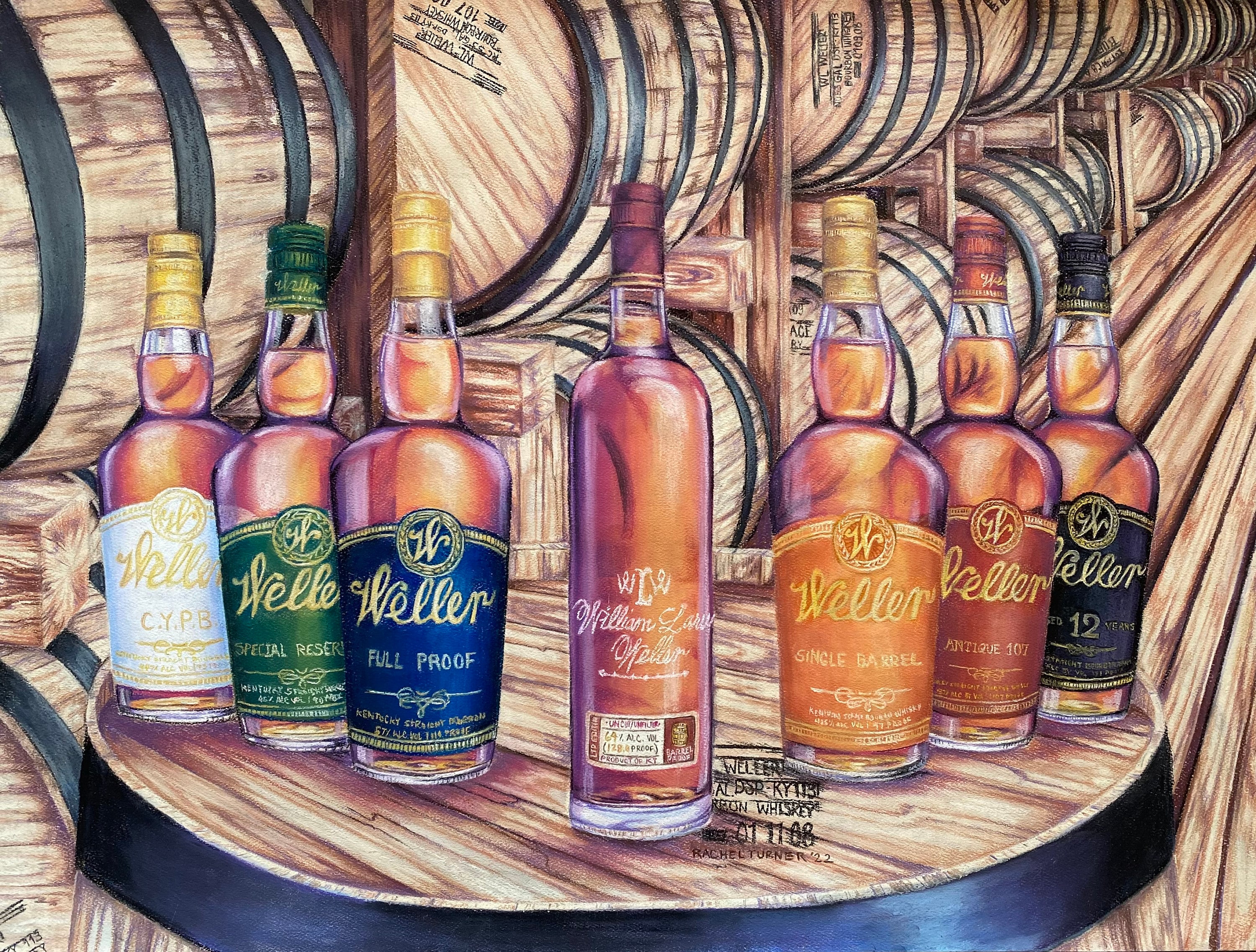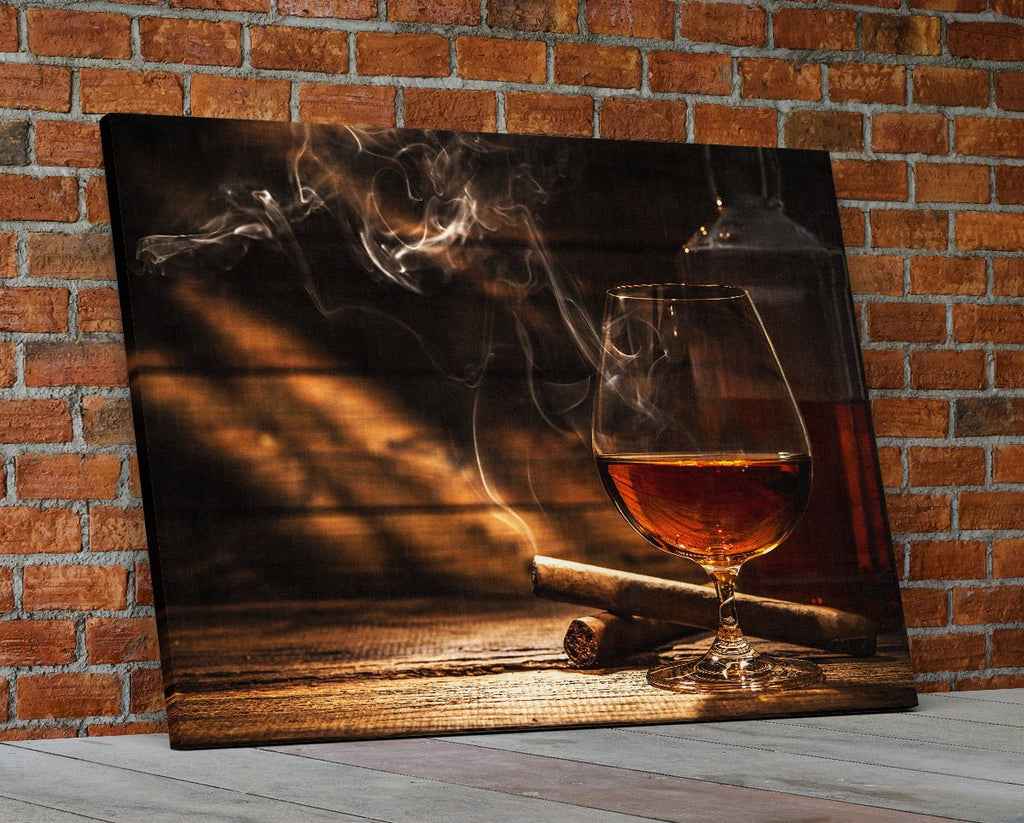Whiskey Art: Catching the Essence of Distillation in Every Brushstroke
Whiskey Art: Catching the Essence of Distillation in Every Brushstroke
Blog Article
The Value of Whiskey Art in Celebrating Heritage and Workmanship in the Beverage Industry
The detailed connection between bourbon art and the event of heritage and workmanship within the beverage sector can not be overstated. Via attentively designed containers and tags, scotch brand names encapsulate their historic roots and the artisanal abilities that define their production approaches.
The Historical Origins of Whiskey
At the heart of scotch's allure lies an abundant tapestry of historical origins that map back to ancient human beings. The origins of scotch can be connected to the distillation methods of the Sumerians and Babylonians around 2000 BCE, where very early forms of fermented grain drinks started to emerge. Nonetheless, it remained in the Middle Ages that the art of purification advanced considerably, specifically in Ireland and Scotland, resulting in the development of bourbon as we know it today.
The term "bourbon" itself originates from the Gaelic word "uisce beatha," meaning "water of life." This phrase highlights the social relevance of scotch in Celtic cultures, where it was frequently connected with routines, parties, and communal bonding. By the 15th century, purification came to be a recognized craft within reclusive neighborhoods, leading the way for the establishment of lawful distilleries.
As profession courses broadened, scotch's popularity expanded, transcending regional limits and catching the rate of interest of aficionados worldwide. Realism Art. This historic trip mirrors not just the workmanship behind bourbon manufacturing yet additionally its indispensable duty in social and social contexts, noting it as a considerable beverage throughout history
Artistic Expression in Branding
Whiskey branding stands as a compelling intersection of virtuosity and business, where aesthetic identity plays a vital function fit consumer perception. The visual appeals of whiskey tags, product packaging, and advertising materials reflect not only the brand name's tale but also its core worths and heritage. With creative expression, distilleries convey a story that reverberates with consumers, evoking feelings and stimulating connections.
Making use of color, typography, and images in branding serves to differentiate items in a saturated market. As an example, typical themes might evoke a feeling of authenticity and workmanship, while modern layouts can represent innovation and forward-thinking. This calculated artistic direction boosts brand recognition and commitment, permitting customers to build a personal connection with the bourbon they choose.
Additionally, artistic expression in branding commonly works as an event of local heritage. Distilleries regularly incorporate regional icons or historical references right into their layouts, creating a local color that welcomes customers to partake in a wider social experience. Inevitably, the artistry behind whiskey branding not only improves aesthetic allure but also enhances the general story of the brand name, cultivating a deeper appreciation for the craftsmanship and heritage embedded in each bottle.
Craftsmanship in Container Style
The virtuosity noticeable in bourbon branding extends beyond visual identity to encompass the workmanship entailed in container design. Each container offers as a vessel not simply for the spirit within, but also for the story it tells regarding its custom, origin, and high quality. The style process requires meticulous attention to information, as components such as closure, shape, and material add dramatically to the general understanding of the whiskey.
Craftsmanship in container style includes selecting high-quality glass that can boost the scotch's color and clarity, while additionally supplying a tactile experience for the customer. The shape of the bottle must be both visually appealing and useful, commonly showing the heritage of the brand name. Lots of distilleries choose unique forms or embossed logo designs that evoke a Visit This Link feeling of authenticity and background.
Additionally, the label layout and typography play an important role in connecting the brand's story. Whiskey Art. A well-crafted container not only astounds the consumer's eye yet also enhances the brand's dedication to quality find out and custom. In this way, the workmanship of container style comes to be an important facet of the whiskey experience, combining virtuosity with a profound regard for heritage
Social Relevance of Bourbon Art
Celebrating practice and craftsmanship, the social relevance of whiskey art transcends simple aesthetic appeals, linking with the historic and social stories of the regions from which it stems. Each container functions as a canvas, illustrating the one-of-a-kind stories, folklore, and practices that have actually shaped regional whiskey-making methods. The detailed designs typically mirror the heritage of the distillers, incorporating symbols and themes that reverberate with the society and worths of their communities.

Additionally, whiskey art plays a crucial role in common celebrations and celebrations, offering as a tangible link in between people and their shared experiences. By appreciating the virtuosity in whiskey packaging, customers cultivate a deeper understanding and regard for the craft, inevitably improving their satisfaction of the beverage itself.
Modern Trends in Scotch Discussion
In recent times, the presentation of scotch has actually evolved to show modern preferences and trends while still honoring standard workmanship - Bourbon Art. Distilleries are progressively concentrating on visual elements that enhance the general alcohol consumption experience, linking the void between heritage and modernity
Innovative bottle styles have arised, usually incorporating sustainable look at more info materials and artistic labels that tell compelling stories. Lots of brand names currently team up with neighborhood musicians, instilling their items with one-of-a-kind aesthetic expressions that reverberate with customers. In addition, limited-edition launches are often packaged in collectible containers, adding value and appeal for connoisseurs.

Final Thought
In verdict, whiskey art functions as a crucial conduit for sharing the heritage and craftsmanship fundamental in the beverage market. Via detailed branding, innovative bottle designs, and culturally considerable creative aspects, bourbon brand names properly recognize their traditions and get in touch with consumers. This artistic narrative not only elevates the gratitude of whiskey however also strengthens neighborhood identity and pride among producers. Ultimately, whiskey art plays an important role in preserving and celebrating the rich social tapestry of whiskey-making.


Workmanship in container design involves picking high-grade glass that can improve the whiskey's shade and quality, while likewise providing a responsive experience for the customer. In this way, the workmanship of container design comes to be a crucial aspect of the bourbon experience, combining artistry with an extensive respect for heritage.
In conclusion, bourbon art serves as an essential channel for expressing the heritage and workmanship fundamental in the drink market.
Report this page